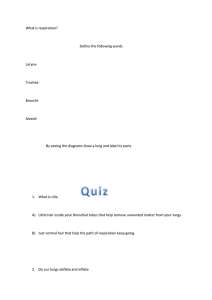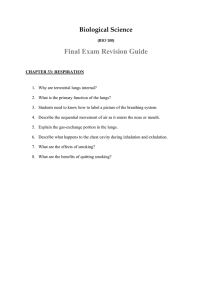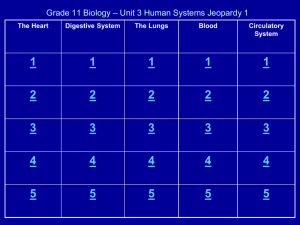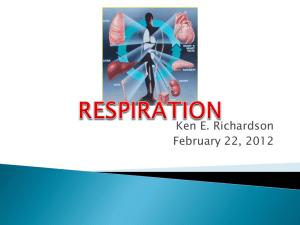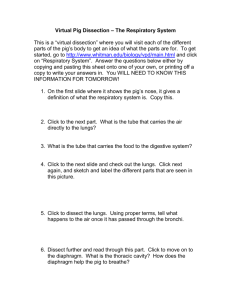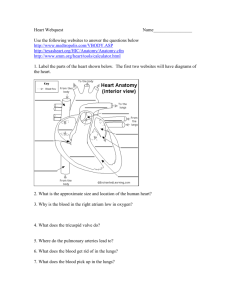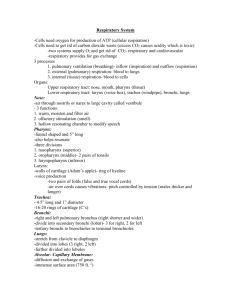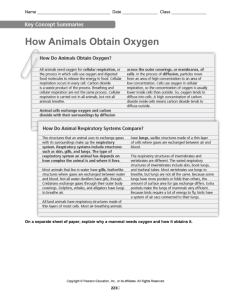File
advertisement
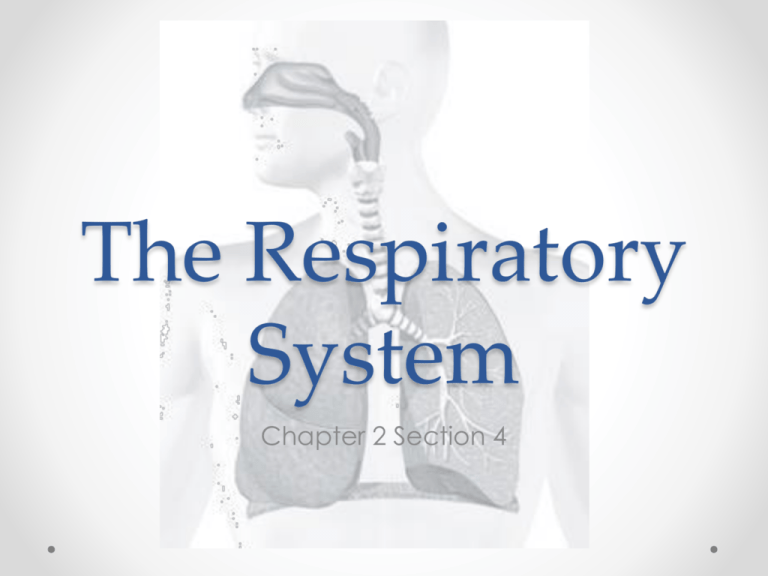
The Respiratory System Chapter 2 Section 4 Function • The purpose of respiration: o To bring in and use oxygen o To release carbon dioxide and water • There are 2 parts to respiration: o Breathing (inhale and exhale) o Cellular Respiration- cells release energy from food Breathing • INHALE: The diaphragm, which is a muscle under the lungs, contracts to pull air into the lungs. • EXHALE: The diaphragm relaxes and the lungs recoil to push air out of the lungs. • Rib muscles also contract to lift the ribs, making more room for air to enter. Cellular Respiration C6H12O6 + O2 = CO2 + H2O + ATP • Oxygen is used by cells to release energy from glucose (sugar). • O2 enters the lungs and passes into the blood to be delivered to cells. • CO2 leaves blood and goes into lungs to be exhaled. Structure • Nose- main passageway in and out of respiratory system • Pharynx- the throat. Used by both food and air so it branches into 2 paths: the esophagus (food) and the larynx (air) • Larynx- part of throat containing vocal chords to make sound when vibrated by air. Structure cont. • Trachea- large tube serves as a passageway for air, aka windpipe. • Bronchus (Bronchi)- two branches at end of trachea to go to the left and right lungs. • Bronchioles- smaller and smaller branches of the bronchi • Alveoli- tiny air sacs at the ends of the bronchioles where air is exchanged with blood in the capillaries. Diagrams
